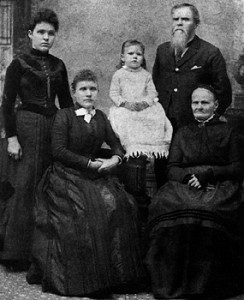![]() If you’re an independent recruiter struggling to make sense of social media, you’re not alone. Approaching social media efforts in a random, haphazard way won’t generate the results you want and will result in a lot of wasted time and effort. Here are five things you can do immediately to improve your use of social media: Read the rest of this entry »
If you’re an independent recruiter struggling to make sense of social media, you’re not alone. Approaching social media efforts in a random, haphazard way won’t generate the results you want and will result in a lot of wasted time and effort. Here are five things you can do immediately to improve your use of social media: Read the rest of this entry »
Contingent Recruiters or Retained Headhunters…Which is Best?
by Dave Nerz I just read a blog post on ere.net by Fraser Hill. The premise is about RPO, but the stereotyping of recruiters is what was most fascinating to me. It seems that Mr. Hill believes the “Headhunter” (retained) recruiter to be more capable than the “RPO” or “Contingent” recruiter.
I just read a blog post on ere.net by Fraser Hill. The premise is about RPO, but the stereotyping of recruiters is what was most fascinating to me. It seems that Mr. Hill believes the “Headhunter” (retained) recruiter to be more capable than the “RPO” or “Contingent” recruiter.
In my opinion, it’s all about how the client wants to pay, not the result they are looking to achieve. Each model provides ample opportunity for the client to specify what they want and expect. If the client is willing to pay a reasonable fee to gain the result, I think any of the many recruitment models and recruiters available can do the work to find top talent.
It is particularly interesting to see that “contingent recruiters” are evolving to more complex payment models as they engage multiple times with the same client. I see “containers” (a mixed contingent and retained fee), small retainers, recruiter engagement fees, pay for hours worked, pay per candidate, and increased total fee payouts all be effective to motivate and incentivize a contingent recruiter to work a complex and longer-term search. Again, it is just a payment issue not a capability issue that drives recruitment models. It is interesting to see that not everyone views it that way.
Do you feel one recruitment model is more capable or effective than the other?
Have You Earned Your Recruiter Certification Yet? Why Not?
by Dave Nerz Let ‘s start one step back from recruiter certification. I view recruiter certification as the culmination of a commitment to your profession as a recruiter. So maybe we should start at the beginning.
Let ‘s start one step back from recruiter certification. I view recruiter certification as the culmination of a commitment to your profession as a recruiter. So maybe we should start at the beginning.
Where does the commitment to the profession begin? To me, it is connecting with and getting connected to others that are working in the same profession as you, a recruiting industry trade association or group. To me, there are many professions that are legitimized by a governing body or an association that ensures professionalism and standards. I want my lawyer to pass the bar exam, I want my doctor to be a member of the appropriate medical association and I want my pilot to be a member of the trade association or governing body that pilots belong to. I expect professionals to be connected to other professionals so that I don’t get bad medical advice or a pilot who doesn’t understand the dangers of wind shear.
So for me…
- STEP 1. Join a recruiting industry trade association or recruiter association like the National Association of Personnel Services (NAPS) in the US. There are other groups in Canada like ACCESS or in Australia like RCSA. As a point of reference only, our organization so believes in this that we have corporately joined NAPS and make NAPS membership available to our members for just $100 annually. We are committed and walking the talk.
- STEP 2. Study the manuals necessary to become an expert on issues and legal requirements of performing to the highest and most ethical standards of your profession. Look for a certification class and take it. Finally once you are confident, take the recruiting association’s exam to become a certified recruiter.
If you expect to be treated like a professional and want your clients to view you as committed to the profession, do these two things. Join your industry’s trade association and get your professional certification. It doesn’t cost much or require much time, and it will set you apart from the crowd.
Independent Recruiters, Does Relocation Have You Singing the Blues?
by Veronica Blatt Today’s installment is courtesy of guest blogger Laurie Johnson. Laurie is Vice President of Account Management with Recruiter Relocation, a firm that provides relocation support for recruiters and their candidates domestically and internationally. Laurie has over 11 years of service with Recruiter Relocation and is considered the “go-to” person for best practices and industry resources regarding placements and relocation. For more information, contact Laurie at www.recruiterrelocation.com
Today’s installment is courtesy of guest blogger Laurie Johnson. Laurie is Vice President of Account Management with Recruiter Relocation, a firm that provides relocation support for recruiters and their candidates domestically and internationally. Laurie has over 11 years of service with Recruiter Relocation and is considered the “go-to” person for best practices and industry resources regarding placements and relocation. For more information, contact Laurie at www.recruiterrelocation.com
For any independent recruiter involved in a search assignment, the more complicated the prerequisite skill-set, the more likely it is that the placement will involve a candidate relocation. This can certainly present a challenge – for both the candidate and the recruiter. Relocations can fail if certain details are not addressed EARLY- pre-hire/pre offer. The following song titles suggest some important points to help independent recruiters maximize successful relocation rates:
Should I Stay or Should I Go – Companies go to great lengths with their relocation partners to write policies that work both for their employees and meet their fiscal bottom lines. A cost of living adjustment is one item that is often overlooked. A salary increase may initially look good, but if it doesn’t go as far in the new location, it may spell disaster in the long term. Find out the COLA early, and immediately dialogue with the candidate on the results.
How Deep is Your Love? – You’ve found the ideal person for the position. They have accepted. And while that’s a great feeling, this positive circumstance really only represents half the battle. For a great, lasting result, they are going to have to perform in the position for a substantial amount of time. A relocation that fails to address the concerns of the new hire’s immediate family: spouse, children, or elderly parent could be destined to fall short of a company’s objectives. These familial difficulties and challenges should be identified and addressed from the very beginning. Converse with your candidate and their family on realistic relocation costs and expectations before an offer is extended.
Dancing on the Ceiling – In this market, there are few who are unaware of the equity position with their home. However, secondary and tertiary considerations such as title charges, taxes, fees, and commission expenses may factor in to a candidate’s willingness to get on board due to a small relocation allowance. Uncover early-on whether a home sale (or inability, therewith) could present a problem.
Pump Up the Volume – Often we use ourselves as an instrument by which to measure other people’s preferences. If a potential candidate is considering a move to a small New England town that we find quaint, it is easy to overlook some of the cultural or even infrastructure issues that might be less than ideal for them. It is important listen and find out what is most important to the candidate and their family – so all their needs are being adequately addressed.
While it may be painful to lose an otherwise acceptable candidate to relocation incompatibility issues, both the company and the candidate will be far better off if the considerations above are addressed from the beginning. Independent recruiters can benefit from working with a relocation partner to help resolve these concerns.
Not All Split Placements Are Created Equally!
by Terri Piersma Recently, I’ve noticed during conversations with some recruiters with whom I speak about membership in our split placement network that they say they have made split placements. Further questions reveal they didn’t make the split placements the “traditional” way. Instead, they provided a candidate to an employer via an online service like BountyJobs.
Recently, I’ve noticed during conversations with some recruiters with whom I speak about membership in our split placement network that they say they have made split placements. Further questions reveal they didn’t make the split placements the “traditional” way. Instead, they provided a candidate to an employer via an online service like BountyJobs.
I propose that the “recruiter community” language for split placements has changed. You can no longer assume that when recruiters state they have made split placements that it occurred the “traditional” way. Specifically, what I mean by “traditional” way is when a recruiter with a job works directly with a recruiter with a candidate and the candidate is hired by the employer. This results in the two recruiters splitting the client fee.
“Traditional” split placements happen in one of the following ways:
1. Informal Network
- Recruiters form their own, usually small, network of trusted trading partners. Most savvy recruiters will have signed split fee agreements even if they make splits with recruiters they have known for a long time.
- In addition, larger informal split networks exist online including in LinkedIn. It is not unusual for recruiters in these informal networks to have never met face-to-face. Again, savvy recruiters will have a signed split fee agreement before working with another recruiter they met online.
- If you are a recruiter considering making split placements with other recruiters or are currently making split placements and do not have an agreement signed with the other recruiter, check out our sample split fee agreement which can be used as a starting point to create your split agreement.
2. Formal Network
- A recruiter pays to participate in a formal network. In NPA, The Worldwide Recruiting Network, members pay one-time enrollment fees, monthly dues, and brokerage payments when split placements occur.
- Networks can have a general focus or specialize in an industry or niche. Some networks may include members located in only one country or state and others, like NPA, have members throughout the world.
- Formal networks must have rules of engagement so that trust can build among its members. If the formal network is not built on trust, an environment develops where split placements will not flourish. The rules of engagement will typically including the treatment of candidate referrals. Also, a formal network should address what happens if something in the split placement process does not go well. Of course, clear and written communication between the recruiters can minimize these situations. As a cooperative of independently-owned recruiting firms, NPA recruiters are bound to act within the Bylaws approved by our members.
- Signing the network’s membership agreement or contract binds its members to abide by its rules of engagement and may eliminate the need for a split fee agreement to be signed between trading partners. In NPA, a separate split fee agreement between trading partners is not necessary since the owners of the member firms signed the NPA Membership Agreement.
Many differences exist between informal and formal split networks as well as split job boards. It is important for recruiters who make split placements to understand the differences including the different definitions of a split placement?
What is your definition of a split placement? Do you prefer “traditional” split placements or those made through split job boards?
Image: FreeDigitalPhotos.net
8 Ways to be a Better Split Placement Partner
by Veronica Blatt At a recent NPA meeting, members shared tips and ideas for how to be more effective split placement partners. These ideas are valuable whether you make splits within a formal network or on your own.
At a recent NPA meeting, members shared tips and ideas for how to be more effective split placement partners. These ideas are valuable whether you make splits within a formal network or on your own.
If you work the job/client side:
- Share the client’s name with your partner. That way, your partner won’t accidentally source candidates from the company that is hiring. While you’re at it, provide the names of competitors that COULD be a good source of candidates.
- Share how many candidates are currently in the process. How many have been interviewed? Are there any internal candidates? What’s missing from the candidates that have already been presented? This will help your split placement partner recruit more precisely.
- Tell your split placement partner about your relationship with the client. Are you friends with the hiring manager? Do you have a long track record of making placements there? They have a great history of speedy payment? You can guarantee that candidates you present will get interviews? Especially for recruiters who work on a contingency basis, these details will help them feel more confident that a successful split placement will occur.
- ALWAYS provide feedback on the candidates you receive. Nothing alienates a split placement partner more quickly than sending candidates into a black hole.
If you work the candidate side:
- PLEASE talk to your candidates before submitting to a split placement partner. And yes, extensive written communication can ‘count’ as having ‘talked’ to the candidate in some circumstances.
- Add value to the information you provide. Do at least 50% of the work, even though it’s common for the recruiter with the client to drive the hiring process. Be ready to support your split placement partner when it’s time to close the candidate, extend the offer, etc.
- Make sure the information about the candidate is current. At a minimum, you need to provide the candidate’s current phone number and email, the most recent employment situation, salary requirements, and relocation details. Your split placement partner isn’t interested in sharing 50% of the fee for out-of-date (or incorrect) candidate details.
- Don’t pester your partner for feedback on the candidate. Your partner is trying to get feedback from the client. Sometimes clients are slow. Nagging your split placement partner won’t make the feedback appear more quickly. And NEVER interfere with your partner’s client relationship.
It takes a great deal of trust and commitment to be a successful split placement partner. Many recruiters are more comfortable making splits within the boundaries of a formal network. If you’re making splits on your own, be sure to execute a signed split placement agreement with your partner to avoid any disputes.
Mergers and Acquisitions in the Global Recruiting Industry
by Dave Nerz As with most things in business, the global financial crisis impacted the number of global recruiting mergers and acquisitions done in the past few years, as well as the value of those deals. Staffing Industry Analysts reports results of global recruiting business acquisitions on a quarterly basis. These facts can be found on their website, staffingindustry.com. According to Staffing Industry Analysts, the number of global deals done in the 3rd quarter of 2009 was at a record low, and even quarters into 2011 showed great weakness in the number of global recruiting acquisitions completed.
As with most things in business, the global financial crisis impacted the number of global recruiting mergers and acquisitions done in the past few years, as well as the value of those deals. Staffing Industry Analysts reports results of global recruiting business acquisitions on a quarterly basis. These facts can be found on their website, staffingindustry.com. According to Staffing Industry Analysts, the number of global deals done in the 3rd quarter of 2009 was at a record low, and even quarters into 2011 showed great weakness in the number of global recruiting acquisitions completed.
More recruiting company purchases are focused on firms doing contract employment and temporary staffing. These types of firms have higher multiples on the sale of a recruiting business because contract employment is considered much more of an annuity than a direct hire placement. Contracts renew and can last for years while direct hire placements can be a “once and done” event. While experts disagree on the multiples, most quote a range of 2 to 4 times EBIDTA. There are many factors that can change this multiple up or down, including the location of the business, the mix of contract to direct hire, and the sector or segment of focus.
The most popular recruiting business sale segments right now are IT, healthcare and industrial. Not a surprise. Again there is a larger multiple on the sale of a recruiting business from these segments and hence, more frequently a deal completed.
A new trend is the global recruiting business acquisition. The reason for the growth in global acquisitions is obvious to me, but maybe I’m too close to the topic of global recruiting to understand why it would not be obvious to all. I see it like the stock market….diversification is good. The same with growing global recruitment companies. They need coverage and diversification into more market areas and more economies. This should help them tap growth markets while diversifying their business portfolio. Global recruiting is expected by more clients as they grow their search for talent. So firms in the US need an Asian presence, and global recruiters based in the UK or Australia may need a North American location.
Has anyone sold a recruiting business recently or done the work to estimate multiples? I am interested to know your experiences.
Recruiting Across Generations
by Veronica Blatt When I started working at NPA there was an article pinned to my desk about the differences in characteristics of people from different generations. Being the only person in the NPA Headquarters office of my generation, it was helpful in understanding the differences between me and my co-workers. For recruiters, it’s important to understand the differences between generations (of job seekers, hiring managers, global recruiters, etc.) and be prepared to answer questions and tailor messages accordingly. The hiring manager might have a preference so the more you know, the better chance you have at making a successful placement. Below I’ve outlined some of the characteristics of each generation:
When I started working at NPA there was an article pinned to my desk about the differences in characteristics of people from different generations. Being the only person in the NPA Headquarters office of my generation, it was helpful in understanding the differences between me and my co-workers. For recruiters, it’s important to understand the differences between generations (of job seekers, hiring managers, global recruiters, etc.) and be prepared to answer questions and tailor messages accordingly. The hiring manager might have a preference so the more you know, the better chance you have at making a successful placement. Below I’ve outlined some of the characteristics of each generation:
Traditionalists (born between 1900 – 1945)
- Have a strong work ethic
- Are respectful of authority
- Value work and their job
- Place duty before pleasure
- Are loyal
- Are patient
- May have a hard time accepting changes in technology
- Prefer a command and control style of leadership
- Rarely say no
Baby Boomers (born between 1946 – 1964)
- Live to work
- Invented the 60-hour work week
- Are loyal
- Are extremely competitive in work and life
- Look for leadership
- Sense of who they are is deeply connected to their career and achievements
- Still have the mentality that a job can be for life
- Have some trouble with change
Genxers (born between 1965-1980)
- Strive for a work-life balance
- Tend to be less loyal than Baby Boomers
- Are technology savvy
- Crave feedback
- Are independent and resourceful
- Are entrepreneurial
- Want to be kept busy with challenging work
- Look at a job as a contract
Millennials (born between 1981-1999)
- Are technology savvy
- Are the digital generation
- Prefer a team based environment
- Are collaborative
- Relate well to Traditionalists
- Are energetic
Understanding the differences between generations will give you a better idea of some of the things you can expect from a job seeker of a particular generation. These characteristics will help you in working in a global recruiting network as well. Recruiters of all ages are looking to make money and work together to be successful. Part of that success may stem from your understanding of how to work with a recruiter 20 years older or younger than you.
What is your experience in working with a recruiter or job seeker of a different generation than your own? Do you find the characteristics above to be true?
Plenty of U.S. job openings for independent recruiters
by Veronica Blatt Today’s guest blogger is Anne Downing with Demetrio & Associates, LLC located in greater Phoenix, Arizona. Demetrio & Associates is a boutique recruitment firm that has clients across the US as well as in international locations. The firm places candidates in sales & marketing, advertising, wireless and software positions.
Today’s guest blogger is Anne Downing with Demetrio & Associates, LLC located in greater Phoenix, Arizona. Demetrio & Associates is a boutique recruitment firm that has clients across the US as well as in international locations. The firm places candidates in sales & marketing, advertising, wireless and software positions.
It seems independent recruiters hear about unemployment, job openings, layoffs etc. each and every day. One day there is news of low unemployment rates, and then the next thing you know it we hear something negative and we are left thinking that there are few job openings in the US and it may stay this way for a long time.
As of the end of June, there were 3.8 million job openings in the US., the most since July 2008. Even the lukewarm jobs report for July was the best in five months. Where are all of these jobs you might ask… according to the Bureau of Labor Statistics from the US Department of Labor, the industries with the greatest amount of job openings as of June 2012 are the following:
- Professional and Business Services (718,000 openings)
- Healthcare Services (700,000 openings)
- Healthcare Assistance (644,000 openings), and
- Transportation and Utilities (601,000 openings).
Other sources, including Monster.com, indicate that highly skilled workers and entry-level workers have the biggest pool of jobs to choose from. Industries including finance, engineering and technology have numerous job openings across the US for the highly skilled workers. Entry-level candidates have the greatest opportunity to find positions in the healthcare and hospitality industries.
We have a long way to go to get back to our pre-recession employment market because the US lost 9 million positions during the recession. It has been predicted by Moody’s that if things stay on course the US will create 2.7 million jobs in 2012 and 4.5 million jobs in 2014. If this turns out to be the case, we will be back to our prerecession number by the end of 2014.
There are a lot of great job opportunities out there and a lot of qualified job seekers. It’s a great time to be an independent recruiter!
3 Myths: Technology and Independent Recruiters
by Terri Piersma Speculation abounds as to whether using technology to hire candidates will replace third-party recruiters. While technology has certainly changed candidate recruitment, I do not believe it can replace independent recruiters.
Speculation abounds as to whether using technology to hire candidates will replace third-party recruiters. While technology has certainly changed candidate recruitment, I do not believe it can replace independent recruiters.
Mike Ramer, Ramer Search Consultants, addresses this issue in his blog post entitled “7 Myths of Recruiting with Technology.” I encourage you to read his entire post if you are interested in this topic.
For the purposes of this post, I will comment on three of the myths Mike mentions:
- Myth: Technology can be used to identify talent.
- Myth: Technology can qualify a candidate.
- Myth: The Internet and technology can bring aboard the selected candidate.
While working with independent recruiters may not be appropriate for all open positions, they definitely assist employers fill positions they either do not have time to fill or are those “difficult to fill” positions. The Internet can identify job seekers; many job seekers, in fact, who may or may not be qualified for the open position. However, an independent recruiter will qualify the candidates and weed out the ones who are not a fit for the company and/or the position.
Qualifying a candidate is a key phase of the recruitment process. Technology is not a substitute for having a conversation with a candidate; either on the telephone, via Skype, or in-person. Until artificial intelligence is used in recruitment, interaction between two human beings is the best way to communicate and qualify. Independent recruiters listen to the candidate and respond to what is said and what is not said. Technology cannot do this.
Lastly, I believe there is no substitute for an independent recruiter when it comes to ensuring the candidate who receives the job offer, accepts the offer. Mike Ramer summarized it well, “The main reason technology will not replace recruiters is that it cannot have conversations, listen and respond. Even digital conversations, through email, text or social media, do not have the essential emotional elements (voice, eye contact, chemistry) to guide people through the hiring process.”
Do you agree that recruiting with technology will not replace independent recruiters?
Image: FreeDigitalPhotos.net